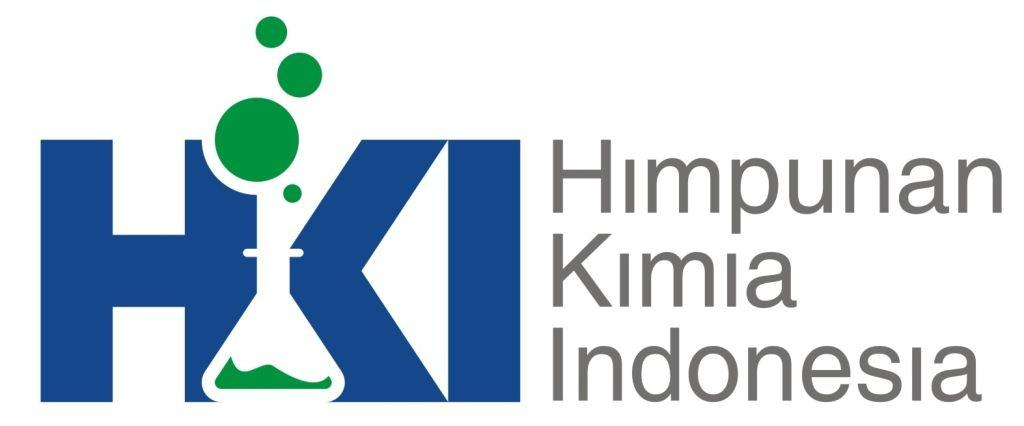Lignan (+)-Piperitol-γ,γ-Dimethylallylether from Stem Bark of Zanthoxylum rhetsa (Roxb.) DC (Rutaceae)
Abstract
Lignans are a group of phenylpropanoid dimers in which the phenylpropane units are linked by their propyl side chains' central carbon (C8). Lignans have various biological activities, including antiviral, anticancer, cancer preventive, and cytotoxic. Zanthoxylum rhetsa (Roxb.) DC is a tree with prickly branchlets belonging to the Zanthoxylum genus, commonly known as panggal buaya in Indonesia. Asian tribes have used this plant as traditional medicine. In this study, (+)-piperitol-γ,γ-dimethylallylether, a furofuran lignan, was successfully isolated. The chemical structure of compound 1 was determined based on spectroscopic data, including 1D- and 2D-NMR, mass spectroscopy, and by comparing with previous spectral data. In addition, compound 1 was tested for its cytotoxic activity against MCF-7 breast cancer cell lines in vitro and showed weak activity with the IC50 value of 261.37 µg/mL.
Keywords
References
Arruda, M. S. P., Fernandes, J. B., Vieira, P. C., Da Silva, M. F., & Pirani, J. R. (1994). Protolimonoid and lignans from Zanthoxylum petiolare. Phytochemistry. 36.(5), 1303-1306.
Camarillo, I. G., Xiao, F., Madhivanan, S., Salameh, T., Nichols, M., Reece, L. M., Leary, J. F., Otto, K. J., Natarajan, A., Ramesh, A., & Sundararajan, R. (2014). Low and high voltage electrochemotherapy for breast cancer: An in vitro model study in Electroporation-Based Therapies for Cancer. Eds. Sundararajan. R. Woodhead Publishing. Cambridge; United Kingdom.
Hayat, M., & Vandna, K. (2018). A review on medicinal properties of Zanthoxylum armatum DC. Research Journal of Pharmacy and Technology 11(5), 2131-2138.
Huang, W. Y., Cai, Y. Z., & Zhang, Y. (2010). Natural phenolic compounds from medicinal herbs and dietary plants: potential use for cancer prevention. Nutrition and Cancer. 62 (1), 1-20.
Kyaw, C. M., Lae, K. Z. W., & Ngwe, D. H. (2020). Investigation of phytochemical constituents and some biological activities of the spine of Zanthoxylum rhetsa (Roxb.) Dc.(Ka-Thit-Phu). Journal of the Myanmar Academy of Arts and Science. XVIII (1B), 103-116.
Machana, S., Weerapreeyakul, N., Barusrux, S., Nonpunya, A., Sripanidkulchai, B., & Thitimetharoch, T. (2011). Cytotoxic and apoptotic effect of six herbal plants against the human hepatocarcinoma (HepG2) cell line, Chinese Medicine, 6 (39), 1–8.
Mallya, R., & Bhitre, M. J. (2020). Cytotoxic activity and initiation of apoptosis via intrinsic pathway in jurkat cells by leaf extract of Zanthoxylum rhetsa DC. Nutrition and Cancer. 1-12.
Mukhija, M., Dhar, K. L., & Kalia, A. N. (2014). Bioactive lignans from Zanthoxylum alatum Roxb. stem bark with cytotoxic potential. Journal of Ethnopharmacology. 152, 106–112.
Nissanka, A. P., Karunaratne, V., Bandara, B. R., Kumar, V., Nakanishi, T., Nishi, M., Inada, A., Tillekeratne, L. M., Wijesundara, D. S., & Gunatilaka, A. L. (2001). Antimicrobial alkaloids from Zanthoxylum tetraspermum and caudatum. Phytochemistry. 56(8), 857-61.
Pan, J. Y., Chen, S. L., Yang, M. H., Wu, J., Sinkkonen, J., & Zou, K. (2009). An update on lignans: natural product and synthesis. Natural Product Reports. 26 (10), 1221-1352.
Parthiban, S., Kumar, K. G., Boopathi, T., Sangeetha, G., Kokila, T., & Devan, V. S. (2017). In vitro anti inflammatory activity of stem of Zanthoxylum Rhetsa (Roxb.) DC. World Journal of Pharmaceutical Research. 6 (7), 591-600.
Santhanam, R. K., Ahmad, S., Abas, F., Safinar, S., Ismail, I., Rukayadi, Y., Tayyab, A. M., & Shaari, K. (2016). Bioactive constituents of Zanthoxylum rhetsa bark and its cytotoxic potential against B16-F10 melanoma cancer and normal human dermal fibroblast (HDF) cell lines. Molecules. 21(6), 652.
Sarajlija, H., Čukelj, N., Novotni, D., Mršić, G., Brnćić, M., & Čurić, D. (2012). Preparation of flaxseed for lignan determination by gas chromatography-mass spectrometry method. Czech Journal Food Scince. 30(1), 45–52.
Shiono, Y., Sasaki, T., Shibuya, F., Yasuda, Y., Koseki, T., & Supratman, U. (2013). Isolation of a phomoxanthone A derivative, a new metabolite of tetrahydroxanthone, from a Phomopsis sp. Isolated from the mangrove, Rhizhopora mucronata. Natural Product Communications. 8(12), 1735-1737.
Sianturi, J., Harneti, D., Darwati, D., Mayanti, T., Supratman, U., & Awang, K. (2016). A new (-)-5’,6-dimethoxyisolariciresinol-(3'',4''-dimethoxy)-3α-O-β-D-glucopyranosides from the bark of Aglaia eximia (Meliaceae). Natural Product Research. 30(19): 2204–2208.
Su, G. Y., Wang, K. W., Wang, X. Y., & Wu, B. (2015). Bioactive lignans from Zanthoxylum planispinum with cytotoxic potential. Phytochemistry Letters. 11, 120–126.
Tantapakul, C., Phakhodee, W., Ritthiwigrom, T., Yossathera, K., Deachathai, S., & Laphookhieo, S. (2012). Antibacterial compounds from Zanthoxylum rhetsa. Archives of pharmacal research. 35(7). 1139-1142.
Vaquette, J., Cavé, A., Waterman, & P., G. (1979). Alkaloids, Triterpenes and Lignans from Zanthoxylum sp. Sevenet 11831–a Species Inigenous to New Caledonia2. Planta Medica. 35(01), 42-7.
Wang, L. X., Wang, H. L., Huang, J., Chu, T. Z., Peng, C., Zhang, H., Chen, H. L., Xiong, Y. A., & Tan, Y. Z. (2022). Review of lignans from 2019 to 2021: Newly reported compounds, diverse activities, structure-activity relationships and clinical applications. Phytochemistry. 14(202):113326.
Weerapreeyakul, N., Nonpunya, A., Barusux, S., Thitimetharoch, T., & Sripanidkulchai, B. (2012). Evaluation of the anticancer potential of six herbs against a hepatoma cell line, Chinese Medicine, 7: 15.
Xu, M., McCanna, D. J., & Sivak, J. G. (2015). Use the viability reagent PrestoBlue in comparison with alamarBlue and MTT to assess the viability of human corneal epithelial cells, Journal of Pharmacology and Toxicology Methods. 71, 1–7.
Xu, W. H., Zhao, P., Wang, M., & Liang, Q. (2018). Review: Naturally occurring furofuran lignans: structural diversity and biological activities, Natural Product Research. 1-17.
Yousefzadi, M., Sharifi, M., Behmanesh, M., Moyano, E., Bonfill, M., Cusido, R. M., & Palazon, J. (2010). Podophyllotoxin: Current approaches to its biotechnological production and future challenges. Engineering in Life Sciences. 10 (4). 281-292.
Zohora, F. T., Islam, S. N., Khan, S. A., Hasan, C. M., & Ahsan, M. (2019). Antioxidant, cytotoxic, thrombolytic and antimicrobial activity of Zanthoxylum rhetsa root bark with two isolated quinolone alkaloids. Pharmacology & Pharmacy. 10, 137-145.
DOI: 10.15408/jkv.v8i2.26964
Refbacks
- There are currently no refbacks.
Copyright (c) 2022 Unang Supratman

This work is licensed under a Creative Commons Attribution-ShareAlike 4.0 International License.

